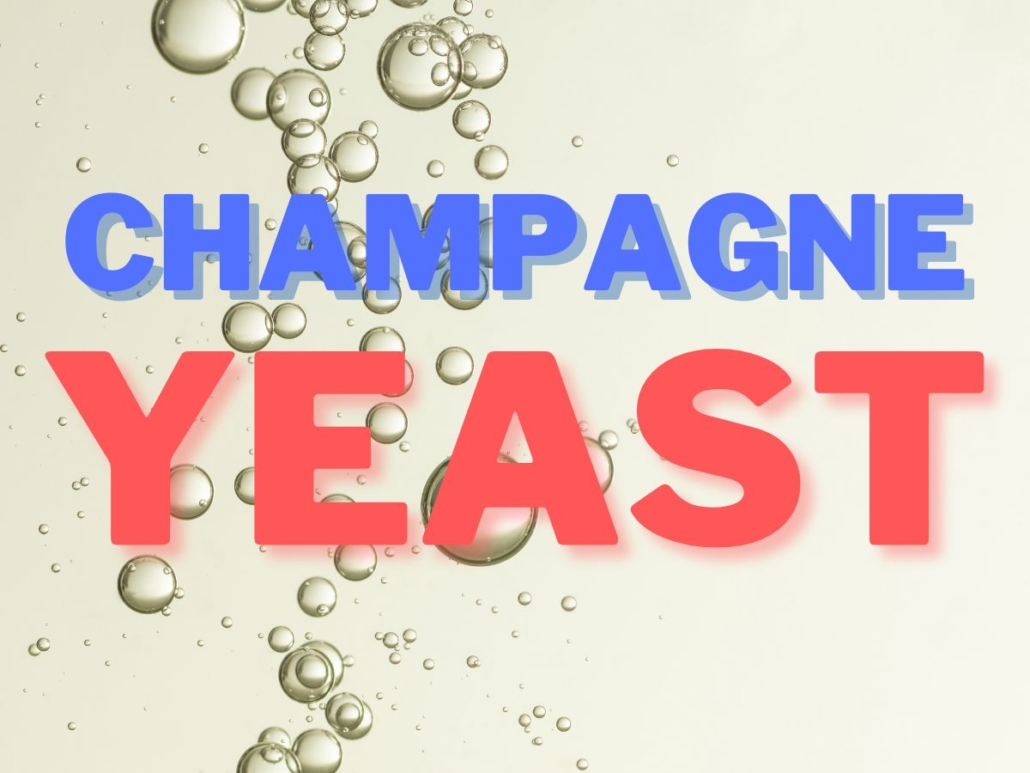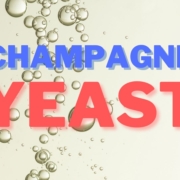Champagne Yeast – A Complete Guide

If you have ever made a fruit, floral or vegetable wine yourself you will probably be familiar with the term “champagne yeast”. You are probably thinking, why use champagne yeast, what is champagne yeast and why is it any different to other yeast strains.
Champagne yeast has some very useful attributes that make it perfect for home wine making and not just for making champagne. In this article, we will cover just what champagne yeast is and why it is recommended so often for making country wines.
Table of Contents
What Is Champagne Yeast?
Champagne yeast is a strain of wine yeast, saccharomyces cerevisiae. In fact, all the most commonly used strains of wine yeast are either the species saccharomyces cerevisiae, saccharomyces bayanus or a combination, although there are some other species used in wine making.
Different strains of wine yeast, although being the same species exhibit different qualities and traits which affect their behaviour and in turn how the wine turns out.
As the name suggests Champagne yeast is used in the production of sparkling wines. The qualities of Champagne yeast are that they are very neutral, producing only small amounts of discernable flavours. They also tolerate high levels of alcohol and produce large amounts of tiny bubbles.
Why Is Champagne Yeast Recommended So Often?
The reason why Champagne yeast is so frequently recommended, including on this website, is because it has some very helpful traits.
In particular, these traits are really useful for making fruit, vegetable and floral wines where you want to turn out great wine with the minimum amount of fuss and intervention. So let’s take a look at some of the things that make Champagne yeast so useful for home winemakers.
Fermentation Temperature Range
The optimum temperature range for most champagne yeasts is quite wide and really forgiving.
Fermentation temperature can affect how the finished wine is going to taste. Fermenting a wine outside of the optimum fermentation temperature range can produce a wine with off flavours and undesirable characteristics.
Lalvin EC-1118 has a fermentation temperature of 10-30°C (50-86°F). This is one of the widest fermentation ranges for any type of wine yeast and means no matter what sort of environment you are fermenting in you are within the desired range.
This means that as long as you try and keep your fermentation temperature stable without too many fluctuations you don’t need to rely on temperature control for your wine fermentation.
Excellent Fermenter
One of the biggest benefits of champagne yeast is that the fermentation is incredibly strong even in wine musts where there is a lack of nutrients for the yeast or high alcohol content.
Fruit, vegetable and floral wines all need nutrients added, unlike grape wines the is a lack of nutrition for the yeast itself within the ingredients of most country wines.
Without enough yeast nutrients in the wine, the yeast will become stressed, fail to produce enough healthy yeast cells or even stop fermenting the wine halfway through leaving the fermentation unfinished.
To combat this, winemakers add yeast nutrients that are available as an additive and select yeast strains that are robust enough to flourish even when nutrients are lacking.
Champagne yeast is one of the strains that ferment really well in wine musts that other strains would really struggle.
Produces Clear Wines Quickly
When you start making wines there is always that feeling that they won’t ever clear properly. This is especially noticeable with wines like banana wine that look really opaque.
Different yeast strains have different tendencies for flocculation and some really powdery yeast seem to always leave a haze months after settling out.
Champagne yeast on the other hand ferments really fast and flocculates really quickly and wine can be clear within a month of starting fermentation. Different fruit wines will still need pectic enzyme as pectin haze is not caused by yeast but if you want a fast turnaround and to avoid using finings then champagne yeast is the way to go.
Produces Dry Wines
Champagne yeast ferments so well even with less than ideal conditions that you can always produce dry wines. You may not prefer dry wines yourself but that doesn’t mean you shouldn’t use champagne yeast.
With a lot of fruit wines, you are adding nutrients and lots of simple sugars and if your yeast doesn’t ferment those sugars completely you are left with residual sweetness in the wine. This is fine if you like sweeter wines but there is a lack of control.
What Are The Champagne Yeast Strains?
The commercial examples of champagne yeast are sold by a few yeast producers but the most common example is
Lalvin EC-1118

Probably the most used and widely known wine yeast there is. Lalvin EC-1118 is recommended for nearly any fruit wine because it really is a workhorse of a yeast strain.
EC-1118 is an all-rounder and in fruit wines that may be low in nutrients and high in simple sugars, it will always give a good, quick and strong fermentation. It tolerates a high level of alcohol and will ferment really dry.
Mangrove Jack’s SN9
Mangrove Jack’s has a wine yeast very similar to Lalvin EC-1118 and that is SN9.
It has the same alcohol tolerance as Lalvin yeast and is recommended for country wines and vegetable wines. Both these commercial strains a neutral-tasting and will ferment at a really wide range of temperatures.
Is Champagne Yeast The Best Option For Your Wines?
Champagne yeast is probably the best option for making country wines especially when you are first starting out winemaking or only making wine a few times a year.
The attributes of having a wide fermentation temperature range, high alcohol tolerance, neutral flavour profile and being a fast fermenter in low nutrient conditions is perfect for fruit, vegetable and floral wines.
You can prepare your must, sprinkle in a sachet of champagne yeast and not have to worry too much about stuck fermentation, off flavours and temperature control compared to using other yeast strains.
There are, however, many more wine yeast varieties to choose from. Wine yeasts that have unique flavour profiles and that are suited for different types of wine and grape varietals and opens up a whole range of options for creating a unique wine or mead.
It is worth exploring different yeast varieties if you are confident in setting up the right conditions for that particular yeast strain. Some yeast strains prefer cooler temperatures so you need to make sure you are fermenting your wine at that particular temperature range. Some need plenty of nutrition which means you may opt for staggered nutrient additions to provide this environment.
The reason for using champagne yeast is because it produces great wines with the minimum amount of fuss and problems. If you want to add a new dimension to your wines then that is the time to start thinking about different yeast varieties.




Leave a Reply
Want to join the discussion?Feel free to contribute!